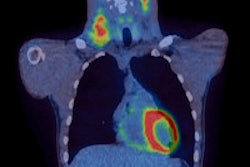Hypofractionated radiation therapy (RT) isn't necessarily better for prostate cancer patients than conventional radiation therapy protocols -- and it may result in worse outcomes for patients with pre-existing urinary tract problems.
The research was presented on October 19 at the American Society for Radiation Oncology (ASTRO) annual meeting in San Antonio by a group from Fox Chase Cancer Center in Philadelphia.
One of the standard treatment options for patients with prostate cancer is radiation therapy, delivered five days a week for eight weeks, at 2 Gy per session. Hypofractionated therapy is delivered in fewer, larger doses.
For the study, lead author Dr. Talha Shaikh and colleagues included 303 men with low- to high-risk localized prostate cancer who had either conventional intensity-modulated radiation therapy (76 Gy in 38 fractions at 2 Gy per fraction) or hypofractionated therapy (70.2 Gy in 26 fractions at 2.7 Gy per fraction) between 2002 and 2006.
Over an average follow-up period of almost six years, there was no significant difference between the two study cohorts in terms of clinical or treatment-related characteristics or quality-of-life outcomes, the researchers found. However, patients who underwent the hypofractionated protocol were more likely to experience urinary incontinence three to four years after treatment -- although this difference was no longer significant by the fifth year of follow-up.
The study results may help identify patients who would be good candidates for hypofractionated radiation therapy, Shaikh said in a statement released by Fox Chase.



















